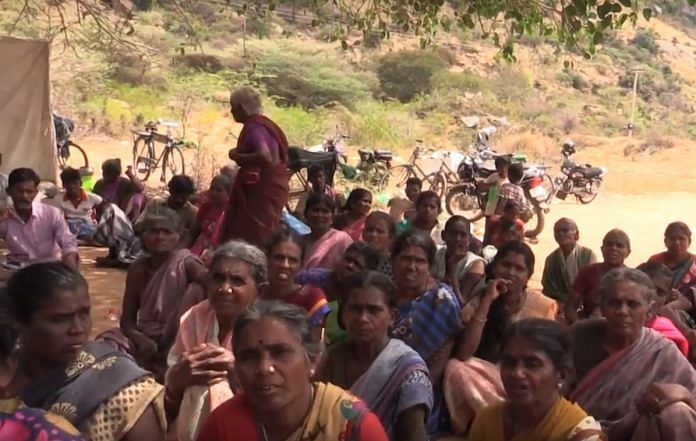The experiences in the ongoing protest in Sandaiyur, Tamil Nadu, expose the casteism present within the Scheduled Caste population.
ThePrint is publishing articles on Dalit issues as part of Dalit History Month.
The voices of Madigas, Valmikis, Mangs and Arundhathiyars are always marginalised in the discourse of anti-caste, which is predominantly dominated by the ‘dominant’ Scheduled Castes of every state. I can comfortably argue that this is the major reason that the scavenging question has never became a Dalit question or a national question. It is treated as a footnote in Dalit writings.
Babasaheb Ambedkar was the pioneer who theorised on the issue of scavenging, but his followers have left that point. Most of the anti-caste members adhere to the local politics of the state. In Tamil Nadu, the Paraiyars would join Tamil nationalism and the populist political parties even if they discriminate against them. Even the party Viduthalai Chiruthaigal Katchi (VCK), claiming to represent Dalits, would join Tamil mainstream parties. However, the same Paraiyars will never align with Arundhathiyars.
It’s time we start paying attention to these political positions.
In the year 2012, Krishnaveni, a village panchayat president in Tamil Nadu, was brutally attacked with deadly weapons.
She barely survived the attack. The news of her attack was restricted to the district page. It became an Arundhathiyar issue, but neither the VCK nor NGOs working on human rights raised the issue. The media barely discussed the issue of caste involved in the attack. There is hardly any Dalit representation in the mainstream media houses. Representation will not automatically democratise the media houses, because the thought processes have to change too.
The experiences in the ongoing protest in Sandaiyur, Tamil Nadu, would assert the casteism present within the Scheduled Caste population. In the village, Arundhathiyars have been protesting against discrimination by Paraiyars for the past year. They demanded that an ‘untouchability wall’ erected by Paraiyars be demolished.
This protest troubles me, not just because two Scheduled Castes are fighting, but also over the way the Paraiyar NGOs, activists, academicians, and documentary makers responded.
Paraiyars in Indira Colony built a boundary wall that restricted Arundhathiyars’ access to a common land used by both the castes in the past. Paraiyars started physically attacking and using casteist slurs on Arundhathiyars who entered the space. In one of the incidents, two dogs, each belonging to the two groups, were fighting inside the compound wall. The Paraiyar who saw this took a knife and hit the Arundhathiyar’s dog, in which the back of the dog was brutally injured. He then went to the family and asked “where is your husband”? The wife replied he was not there. Then the Paraiyar man said: “You send your daughter to my house, I will keep her for a few days and send her back. Only then you will understand the social status of your caste.”
If the same was said by an upper caste Hindu, it would be an offence under the Prevention of Atrocities Act. But since the Paraiyars also fall under the SC category, they cannot be booked under this category.
Paraiyars in the village argued that among the SCs, there cannot be caste discrimination, there can only be differences. They said it’s a family issue and threatened non-SCs who called it an untouchability wall.
Historically, in the prevalent caste hierarchy, the Arundhathiyars are regarded as ‘lower’ than Paraiyars. In this village, Paraiyars don’t address Arundhathiyars on equal terms. In the past, both ate the meat of the dead cow, but in recent times, Paraiyars have stopped eating it.
Arundhathiyars here work on burial, removing dead carcasses, and in municipalities. Some travel out to work as labourers. None of them own wet land, whereas some Paraiyars do.
The Arundhathiyars have raised a powerful political question that has troubled all those engaged in anti-caste struggles because it exposed prevalent caste discrimination among the SCs. The Constitution envisioned all SCs as one.
The protest under the Sandaiyur foothill went on for 64 days. Children boycotted schools, families didn’t go to work, and one person died from anguish.
The government maintained that it is common land encroached by Paraiyars. NGOs, documentary makers, social activist, academicians have argued it’s a wall to protect the temple, even though the temple is at one corner of the land.
Is discrimination among the Scheduled Castes restricted to Tamil Nadu? No, it occurs across all states and we hardly hear about it. A 2010 report by Navasarjan titled ‘Understanding Untouchability in Gujarat‘ said if there are 98 forms of untouchability practised between Dalits and non-dalits, then 99 forms of caste discrimination were found within the Dalit sub-castes.
There are many Sandaiyurs. Representation alone won’t work. It would work only when Dalits forget their individual caste identity.
Babasaheb wrote: “Caste is not a physical object like a wall of bricks or a line of barbed wire which prevents the Hindus from co-mingling and which has, therefore, to be pulled down. Caste is a notion; it is a state of the mind.”
B. Ravichandran is the founder of Dalit Camera. You can visit Dalit Camera’s twitter page @dalitcamera and YouTube channel for more details.
Read more from ThePrint’s Dalit History Month archives.




I am not surprised to know that caste discrimination exists amongst the SCs in Tamil Nadu.You go any part of India you find numerous examples of it.There are such divides amongst all the castes in India, in all religions, like Islam also about which Allama Iqbaal wrote in Jawabe Shiqwa ” Ek hi saf me khade ho Gaye Mahmud o Ayaaz, na koi Banda raha na koi Banda nawaaz” .This is a subject of social sciences that man will never cease to discriminate amongst themselves.The moment a subcaste becomes richer, more educated, powerful, it will enjoy it’s new status by discriminating and looking down apuon it’s own castemen.